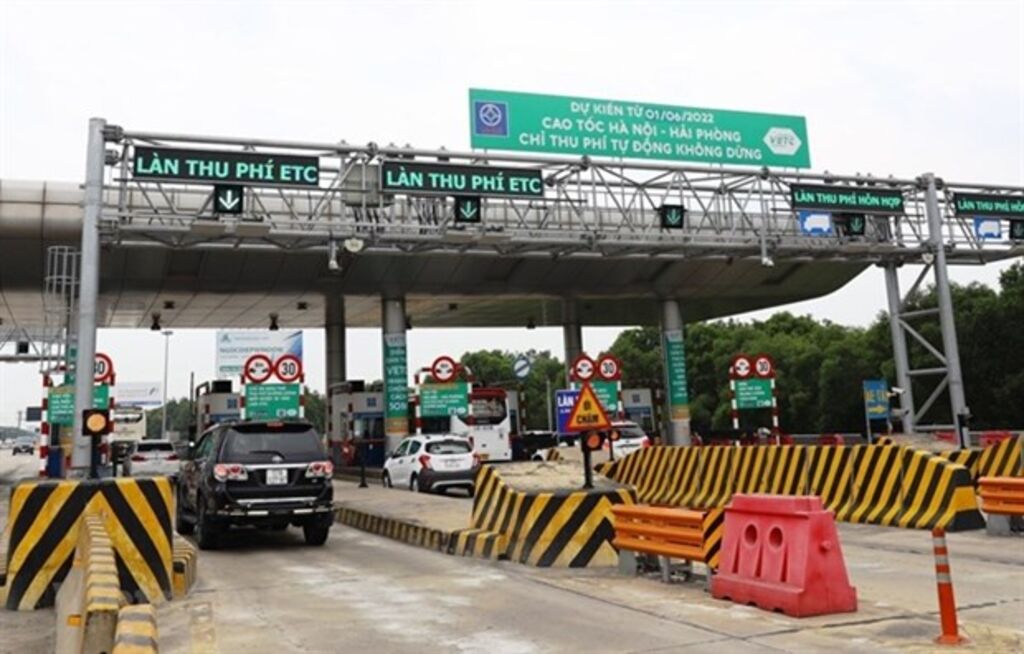 |
| An ETC station on the Hanoi-Hai Phong Expressway__Photo: VNA |
Effective from the beginning of February, Decree 90/2023/ND-CP provides regulations concerning the rates, collection, remittance, exemption, management and use of road tolls.
As per the decree, road tolls apply to registered road vehicles (with vehicle registration certificates and license plates) that have been inspected for circulation (issued with safety certificates), including cars, tractors and similar vehicles.
Accordingly, passenger vehicles with less than 10 seats registered under an individual or business household name must pay VND 130,000 per month.
Those with less than 10 seats including trucks, specialized cars with a total mass of less than 4,000kg, public passenger transport buses (including buses transporting subsidized students and workers), cargo vehicles, and four-wheeled passenger vehicles with motors are subjected to VND 180,000 per month.
Trucks and specialized cars with a total mass from 19,000kg to under 27,000kg, tractors with self-weight plus allowed towing weight from 19,000kg to less than 27,000kg must pay VND 720,000 per month.
Road tolls can be paid annually, monthly, or according to the car’s inspection cycle. The registration unit issues road toll payment stamps corresponding to the payment time.
For cars with an inspection cycle of one year or less, the vehicle owner must pay the road toll for the entire inspection cycle and receive a road toll payment stamp for that period.
For cars with inspection cycles of more than one year (18 months, 24 months, and 36 months), the vehicle owners can choose to pay road tolls annually (12 months) or for the entire inspection cycle.
In the case of paying road tolls according to the inspection cycle, the registry unit will issue a road toll payment stamp corresponding to the inspection cycle. At the end of the payment deadline (inspection cycle), the vehicle owner must go to the registration unit for inspection and pay the road toll for the next inspection cycle.
If vehicle owners arrive for inspection earlier or later than the prescribed inspection cycle, the registration unit will inspect the vehicle and calculate the continuing road toll from the end of the previous paid period until the end of the next inspection cycle.- (VLLF)









